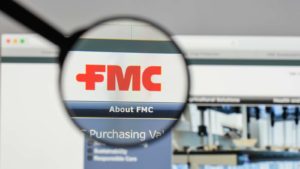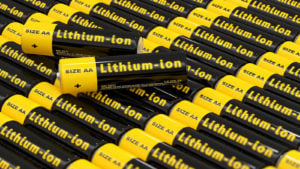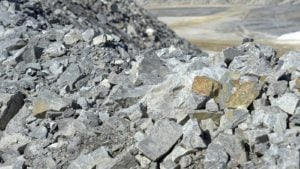Read The Full Article On: Investorplace
Beyond the growth in electric vehicles (EVs), the demand growth for batteries will be huge.
According to Statista, demand for lithium will more than double over the next 5 years to 820,000 tons. And much of that is due to the growing demand for lithium batteries for vehicles.
As demand for EVs increases and production grows, the need for safe, efficient energy storage will also grow. The only difference is, cars and trucks are still built the way they were decades ago, more or less.
Finding sources for lithium is a bit trickier. Let me explain.
You see, lithium isn’t rare. It’s the 33rd most abundant element. It’s pretty well distributed around the world but the problem is, it’s usually found in salt flats and otherwise widely dispersed. There are a handful of places on each continent where it’s found in enough density that it’s worth major production investment.
There are a few places where there are significant stores of lithium. The Bolivian salt flats are believed to be home to more than 70% of the world’s lithium. But extraction is complicated, so it’s expensive, dangerous and requires 500,000 gallons of water per ton of lithium.
Investing in this sector requires some discernment to pick the best names. Here are 5 lithium stocks to buy:
- Albemarle (NYSE:ALB)
- FMC (NYSE:FMC)
- Livent (NYSE:LTHM)
- Lithium Americas (NYSE:LAC)
- Sociedad Quimica y Minera de Chile (NYSE:SQM)
These lithium stocks of the future have significant competitive moats that will help them to flourish as battery demand expands.
Albemarle (ALB)

Source: IgorGolovniov/Shutterstock.com
This isn’t a mining firm, but the next step up the chain, a specialty chemicals maker. Albemarle develops catalysts and reagents that create products that are used in the pharmaceutical, electronics, water treatment, paper and photographic industries, to name just a few.
And it’s a global company with operations in key markets where key elements are mined so they can be converted to viable products at or near their extraction sites. In recent years ALB has launched operations in China and Australia.
It also has a $10 billion market cap, so this isn’t a small firm scrambling for business. It’s well diversified.
Q2 business was slower than last year, which the company expected. But its lithium operations are continuing to expand.
ALB stock is up 58% in the past 12 months, yet its P/E, price to sales and price to book ratios still remain below the market average. This company will remain instrumental in the growing demand for EVs as well as numerous other products.
FMC (FMC)

Source: Casimiro PT / Shutterstock.com
In 2018, FMC, a specialty chemical maker, spun off its lithium portfolio to create a pure play company, Livent.
While a separate company, the spinoff is still tied to FMC, wherein the CEO of FMC is Chairman of the new firm. The goal of the spinoff was to make sure there was a management team focused solely on the lithium market, which is growing rapidly despite challenging times.
Before the spinoff, FMC’s portfolio was nearly the fourth largest lithium businesses on the planet, behind ALB and a few others.
FMC is a good choice for investors looking for lithium exposure, but in the guise of a agricultural product maker that has been around since 1883. It has a $14 billion market cap and its agriculture business is doing well as soybean and wheat demand from China grows once again.
The stock is up 28% in the past 12 months and it offers a 1.6% dividend.
Livent (LTHM)

Source: Lightboxx/ShutterStock.com
As you can see from its ticker symbol, Livent is all about lithium. It’s the pure play spinoff from FMC.
LTHM has had a bumpy ride since its IPO in 2018. It came out of the gates strong trading above 18, but has bounced around since then and settled in around 9, with a $1 billion market cap.
The stock is up 48% in the past year, but given its size, it’s volatile. The new breed of day trader can use this a lithium proxy and that makes it a bit more exposed to the whims of traders, rather than investors.
But the fact is, it has a significant lithium portfolio if you’re looking for pure play on the element. You just have to be patient and expect a fair amount of volatility along the way.
Lithium Americas (LAC)

Source: Shutterstock
This Canada-based mining company may be small — a $720 million market — but it offers a unique potential in this space.
Basically, LAC has two projects in Argentina and one in the U.S., in Nevada. Do you remember where Tesla (NASDAQ:TSLA) has its Gigafactory? Nevada.
Situated the country’s “Lithium Valley”, there’s the interesting possibility that TSLA, especially now that it’s stock price has soared and it has tons of cash, could buy LAC and vertically integrate the operation into it massive battery production plant.
Its Thacker Pass property is already producing lithium sulfate from its production mine in Argentina as it goes through paperwork on its U.S. mining operations. But it’s potential for Gigafactory business is a real opportunity whether it’s acquired or simply a significant supplier.
The stock is up 144% in the past 12 months, yet still trades at a P/E of 17. This is a speculative play at this point, but could be worth some risk capital.
Sociedad Quimica y Minera de Chile (SQM)

Source: Bjoern Wylezich/ShutterStock.com
A broad-based chemical and mining firm that has been operating in Chile since 1968, SQM is one of the big players in lithium.
The stock has a $7 billion market cap and has several divisions, including fertilizers, iodine, potassium and industrial chemicals. It has 7 mining operations as well as 110 different customers on 5 continents.
Because of South America’s large lithium reserves, SQM is a compelling addition to a lithium portfolio since it’s a local firm and has the support of the Chilean government. That’s an important factor in region where elections can swing wildly among political parties.
SQM stock is a little pricey here, but part of that is because of its 38% run in the past year. If lithium demand continues as predicted, that premium will not be an issue

